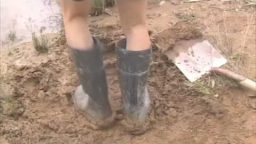When it comes to homesteading, there is no such thing as knowing too much or working too hard. Yet, many people want to get into this lifestyle without truly understanding what it means or by looking for shortcuts. Instead of trying to find the “easy” way to be a homesteader, you need to find ways that you can become a better homesteader. The life is not always easy, but it can be extremely rewarding. The following are a few tips that will help you to get into the right mindset and to make sure homesteading for the long haul is right for you.
Learn to Live With Less
This does not mean you need to give up all the things that you enjoy. It simply means that you need to learn to live within your means, which is something that so many people today have a problem doing. You do not need to have the latest phone and all the latest gadgets.
You do not need to spend on all the fancy, shiny new equipment, and gear that you think you need for the homestead either. If you need a tractor, you do not have to buy one that is brand new. Buy a used one and learn how to do the repairs yourself. This leads us into the next thing you will want to do to become a better homesteader.
Learn a New Skill Each Day
You are never done learning when it comes to homesteading. There is always something new that you can learn, and you should make it a point to try to learn something each day. It might be something simple, such as how to cook a new meal or how to clean a fish. It might be something more complex, such as making repairs to that tractor we mentioned earlier. Strive to learn something new and find people who are willing to teach you things. You can also share the knowledge you have with them.
Learn this simple step by step process to recondition old batteries and NEVER buy batteries again>>>
Focus on the Task at Hand and Work Hard at It
When it comes to homesteading, you can’t put things off until later in most cases. If you do, you will have too much work piling up and it will be overwhelming. You need to have a plan of action for each day and you need to focus on each of the tasks you need to get done. If there are others in the family, spread out the tasks and chores among everyone and work together to get things done.
Consider New Ways to Boost Your Income
Another way to improve as a homesteader is to find some ways to make some extra income that you can invest into the homestead or put into your savings. If you are doing woodworking or making soap or candles, for example, you could sell those goods online and at craft shows. There are plenty of ways that you can make money doing what you love. Take a look at the following links to learn some super simple crafts:
>> 5 Step DIY Soap
>> 16,000 Woodworking Plans
These are just some of the ways that you can become a better homesteader. Start implementing these tips now, and keep on learning.







 but, like making your own bread or canned products, also gives you a sense of control over what is going in your soap and knowing it’s safe. If you can get over the fear of working with lye, soap-making can be a blast, and odds are you won’t go back after you’ve tried it. Just make sure to follow basic safety precautions and you’ll be making all your family members homemade vanilla-lavender-coconut suds in no time!
but, like making your own bread or canned products, also gives you a sense of control over what is going in your soap and knowing it’s safe. If you can get over the fear of working with lye, soap-making can be a blast, and odds are you won’t go back after you’ve tried it. Just make sure to follow basic safety precautions and you’ll be making all your family members homemade vanilla-lavender-coconut suds in no time!